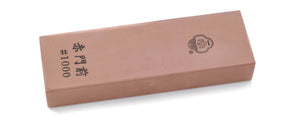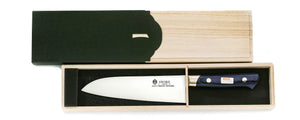Yanagiba vs Fugubiki vs Takobiki
When discussing Japanese knives, many people think of Sashimi knives, or Yanagiba. When slicing Sashimi, the chef wants to keep the piece of sashimi in the best condition as much as possible, so it is important that the cut should be long and crisp, pulled in one direction. As sushi and sashimi gained popularity around the world, so did the Sashimi knife. Some Japanese cuisine lovers also have some to enjoy sashimi at their home.
Various types of sashimi knife
Perhaps the sashimi knife that everyone imagines is "Yanagiba knife," which is a sashimi knife that has been used in the Kansai region (Osaka area.) In the Kanto region (Tokyo area,) a square-shaped sashimi knife called a "Takobiki" has long been used and is still accepted by a certain segment of the population.
In this article we will discuss each type of the sashimi knife.
The Traditional Yanagiba
The Yanagiba is the most known style of Sashimi knife outside Japan. It is also the blade that most resembles its namesake, the iris in shape. Used historically and to this day in the Kansai region, it is long and thin with a single sided edge that is extremely sharp for clean cuts in one stroke. Nowadays, it's also become popular in Kanto and other regions.
The Kiritsuke Yanagiba
A characteristic of this knife is that the cutting edge is sharp and pointed. Since the cutting edge comes to the front, fine work can be done without stressing the wrist. Also, the center of gravity of the blade is slightly toward the front, so the sweet spot is easy to handle.
In recent years, the Kiritsuke style has gained in popularity.
The Takobiki / Takohiki
Takobiki can also be called "Takohiki." They are the same. The Takobiki is thinner and slimmer than Yanagiba. The traditional style has a square shape. It is used for sashimi, but it is an advanced sashimi knife that requires more advanced skills, as the circular motion for cutting must be supplemented by the arm and wrist.
There is another kind of Takobiki which has an upward pointed tip like a Japanese sword, called "Sakimaru Takobiki."
The Fugubiki / Fuguhiki
The Fugubiki (Fuguhiki) is thinner and lighter than the Yanagiba and the Takobiki. It is suitable for cutting sashimi especially Pufferfish (Fugu) which has meat that is quite hard, so it is needed to slice that fish in very thin pieces.
Compare Each Types of Sashimi knife: Yanagiba vs Fugubiki vs Takobiki
Above picture (from top): Yanagiba, Fugubiki, Takobiki. Their size is 300mm blade-length made from the Blue Steel #2 Hongasumi.
As you see in the picture, Fugubiki and Takobiki knives are narrower than Yanagiba knives, and they are slimmer and lighter than Yanagiba too. (Yanagiba 220g, Fugubiki 140g, Takobiki 160g)
The left picture (from top) : Yanagiba, Fugubiki, Takobiki. They are the same one as above picture.
The thickness: Yanagiba 3.4mm > Takobiki 2.7mm > Fugubiki 2.1mm
It is advisable to choose a sashimi knife according to the frequency of the work that occurs. If you often make sashimi from raw fish, choose a Yanagiba knife; if you often make thin slices, choose a Sakimaru Takobiki or Fugubiki.
In Japanese cuisine, you often work at the counter, so it may be important to entertain your customers with the appearance of a knife like the Sakimaru Takohiki.
How to choose the material of Sashimi Knife
Firstly, you should consider if you have concerns about rust. If not, you may choose a high carbon steel such as White Steel, Blue Steel, etc. because it has very good cutting performance and sharpens easier than stainless steel.
On the other hand, if you do have concerns about rust you should choose a stainless steel material because it is rust resistant. However, it does not mean stainless steel can completely prevent rust. It can rust but does not rust easily like high carbon steels. Our recommended stainless steels are Silver Steel #3 (Gin-san) and VG-10.
Recommended Size of Sashimi Knife
Blade length 21cm - 24cm is popular for home use becasue they do not need large cook space while 27cm - 30cm is popular among professional chefs. Long blades are good for slicing in a single cut, even if the fish you're cutting is large.































